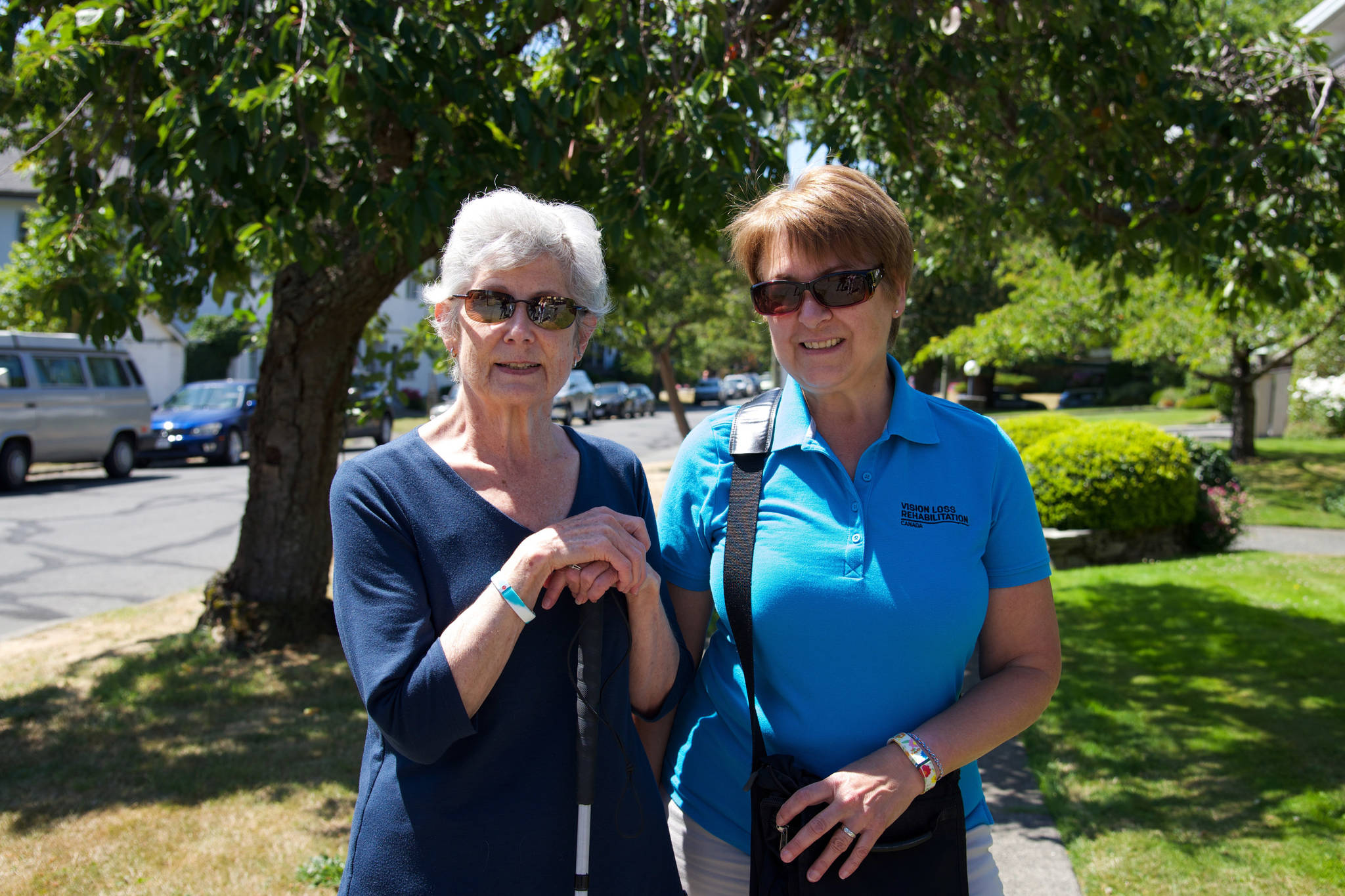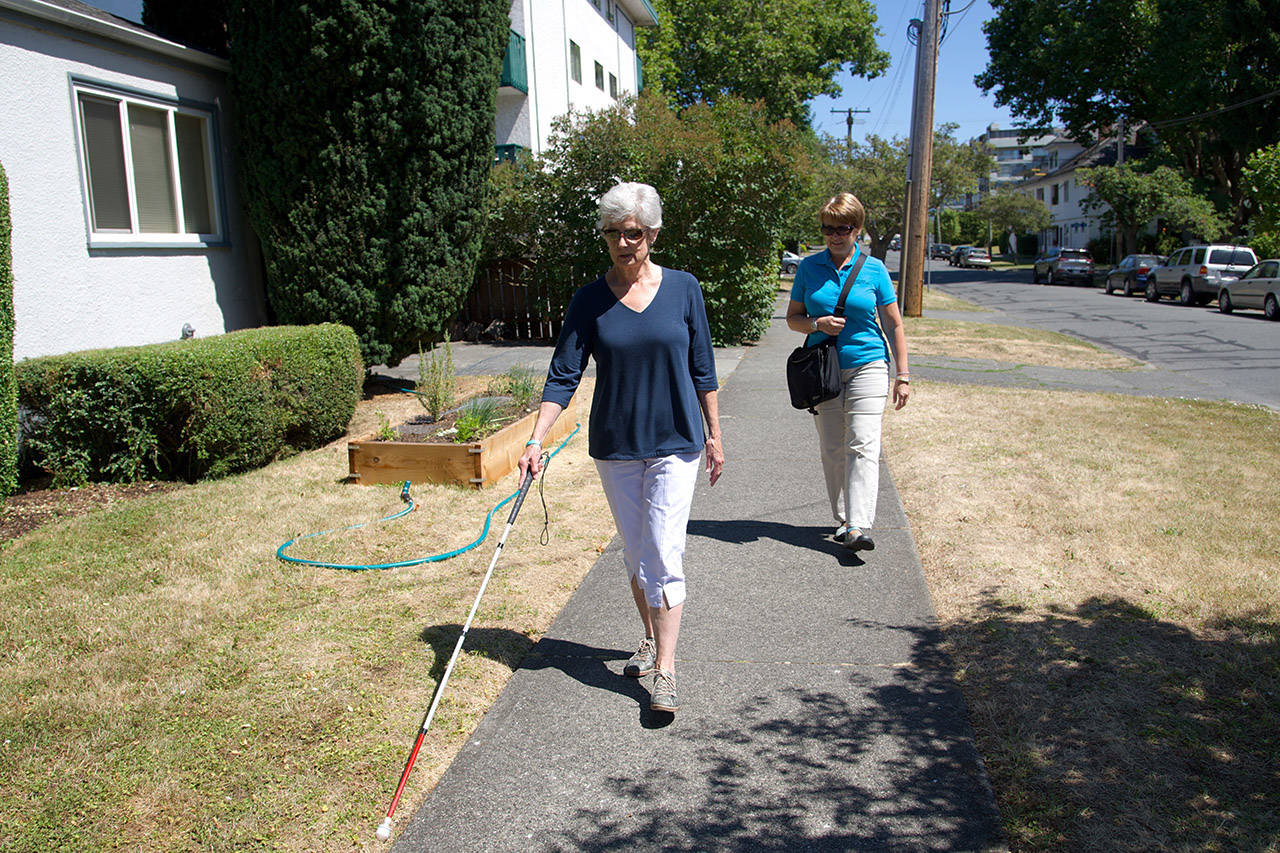Leaving your house and crossing the street to go to the grocery store might be such a familiar task that you don’t even think about it.
That’s not the case for those who are visually impaired.
Knowing where the sidewalk ends, when it’s safe to cross the street, how many blocks to go before turning, or even if there are steps to get into a plaza are all obstacles over 6,000 people across Vancouver Island with visual impairment must navigate – and there’s only one person trained to help them figure out how to do it.
Barbara Schuster is an orientation and mobility specialist who works for the Canadian National Institute for the Blind (CNIB).
“It feels really good, because when my clients succeed in their goals, I feel like I was a part of that,” she says. “It makes me feel like I helped make a difference.”
RELATED: Blind community says bike lanes put their lives at risk
Schuster helps clients learn to use a white cane to assess their surroundings, to use their hearing to navigate, and trains them to count blocks and keep track of which direction they’re facing. She also helps plan out daily chores, like mapping out how to get to a doctor’s office (how many doors down the hall is it?), figuring out which bus to take to the mall (how many stops until you get off?) or even planning a route to find university classes (same classroom as last semester, door on left-hand side, up three steps).
Her clients live all across the Island so she’s always on the move. Those clients have varying degrees of vision loss and 90 per cent of them retain some vision. Most are elderly, losing vision from age-related macular degeneration.
“The average age of my clients are 82,” Schuster says, “But I do help some younger ones.”
She recalls assisting a young man who wanted to do a paper route, so she recorded instructions on where to put each paper and which direction to turn, which he listened to until he had it memorized.
ALSO READ: Blind Victoria man loses Supreme Court appeal in taxi discrimination case
Other clients have suffered sudden vision loss and require more help to get used to their new challenges.
Gail Lane is a Victoria woman who suffered a seizure in 2014. While hospitalized, she was given an anti-convulsant drug that triggered a rare but devastating reaction called Stevens-Johnson syndrome, an immune response that made her body attack itself. Lane’s skin and eyes were so badly affected that she went blind, retaining only some light perception in her left eye, which she believes she is losing.
“It’s very overwhelming to lose your sight. It’s scary. It’s intimidating. It’s exhausting,” she says. “I don’t know what I would have done without people like Barb and other CNIB staff … it was a lifeline for me.”
Lane also received help to learn how to cook for herself and get dressed.
“Matching socks is the worst,” she laughs.
Lane admits she’s not where she wants to be yet with being independent and mobile, but thanks to Barb, she is comfortable in her home and walking around the block. At this point, she doesn’t like going anywhere else without some support, but she wants to eventually be able to go to a local rec centre on her own.
“It’s a bit hard with Barb’s schedule; the territory is so huge, the whole Island! How do you cover that and be able to be with any of your clients as frequently as you might like, or as they might like?”
As CNIB is a charitable organization, lack of funding is a barrier to hiring additional mobility and orientation specialists.
Still, Schuster and Lane try to meet up every three weeks or so.
“She’s wonderful, she’s been very helpful to me,” Lane says. “I’m sure she’s been very frustrated with me, too, but I haven’t hit her with my stick yet, and she hasn’t tried to take it away from me.”
Like us on Facebook and follow us on Twitterand Instagram

